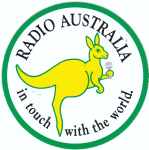MY INVOLVEMENT WITH RADIO AUSTRALIA
Since the beginning time, I have always had a keen interest in Radio Australia and
had provided a lot of voluntary assistance to its Program Production department in the years 1964 to 1980.
From 1964, I had established and maintained personal contacts with many Radio Australia
people, and had visited the studios on many occasions in Melbourne's CBD. I did many interviews with Keith Glover.
In 1982, I travelled to Europe on a four-week trip, with a colleague
from Melbourne. This was a combined radio club/sightseeing adventure, and our journey took us through Germany, Austria,
Switzerland, Denmark, Norway, Sweden, Belgium, Italy, and the Netherlands.
In Italy we stayed for a couple of days with my relatives in Livorno.
Radio Australia had
expressed interest in our trip. and surprisingly loaned us one their state-of-the-art Byer professional tape recorders,
normally used by ABC reporters for outside broadcast work.
We attended meetings of some of the major radio monitoring Clubs in various countries,
where I made many interviews with leaders of those groups, which were subsequently included as special features in RA's "Spectrum"
programs.
Here are some details of Radio Australia's evolution....
December 20, 1939
The first regular Government-controlled
overseas radio service from Australia commenced on December 20, 1939, and was known as "Australia Calling", the genesis
of Radio Australia. It was also kniown as "The Voice of Australia".
The name Radio Australia came into being in 1945.
The service operated in various languages, from existing transmitters located at
Lyndhurst (near Melbourne) in Victoria ( 2 kW) and from AWA facilities in Sydney.
1940
The Post Office
built a 10 kW SW transmitter in Perth, and in 1941 added a second transmitter of 10 kW at Lyndhurst, complementing the older
2 kW unit which had operated there from 1928.
As the War extended and the Battle for Britain incresed in intensity, the
British and Australian Governments, fearing damage to the BBC's transmitters, decided that
an alternative high-powered station had become urgent.
The site chosen was an Shepparton, 200 km NE of Melbourne.
1944
Before the war ended, three transmitters were built
at Shepparton, two of 100 kW, one of 50 kW.
During the War and immediate postwar period program control alternated between the
ABC and the Department of Infomation, and in 1950 it reverted solely to
the ABC.
Facilities at Shepparton have been extended over the years, and there are now seven
100 kW transmitters there..
A switching system enables any transittter to be connected to the appropriate aerials
to suit the frequency and direction desired.
1970
In 1970, the Australian Government commissioned
a new facility at the Cox Peninsula, near Darwin, NT. This was sold to a religious organization in 2005, which subsequently closed
down the station in 2010 and some of the equipment transferred to Broadcast Australia, for use at Shepparton and Brandon.
Other equipment was sold to HCJB-International for use at its Kununurrra site, in Western Australia
The land has now been handed over to the local Aboriginal people.
Radio Australia does not own or operate any transmitters - its infrastructure is leased from the private company Broadcast Australia.
June 12, 1987
The Lyndhurst station closed down. The station had five transmitters in
operation at the closedown. The admin building was used until 1990 by Telstra as a technical service centre for radio communications
maintenance. After that, the land was sold and is now a high-density residential area. No trace remains of the former Radio
Lyndhurst!
1989
Another site is at Brandon, North Queensland, where there
are three 10 kW tranmsittters, DRM-capable. This site commenced in 1989, using transmitters transferred from Lyndhurst..
Radio Australia had also broadcast from other sites:
Carnarvon WA 1975-1996. On closure, the transmitters were transferred
to Darwin.
Perth 1971
Gnangara
WA 1975 (propagation tests)
1983
In 1983, as part of a national policy, the
ABC had decided to relocate many of its capital city production and administration areas to the suburbs.
In
Melbourne, a new, large, modern grandiose multi-story facility was built in 1984 at the outer eastern suburb of
East Burwood, on open farmland which had previously been the Tally Ho correction centre. This was intended to be the new admion
centre for all of the ABC's operations which had previously been managed from the CBD.
Strong and sustained opposition to this move emerged from the Staff Associations,
which resulted in only the Radio Australia people being relocated there.
1994
The East Burwood centre
was abandoned and Radio Australia and all other ABC departments moved to a new building on the perimeter of the CBD, at the
Southbank precinct, where it continues to operate to the present
The Australian Radio DX Club held its 1985 Annual Convention
at the East Burwood complex, and its 1995 Annual General Meeting took place at Southbank in December.
SPECTRUM PROGRAM
In 1981,
a series of meetings weere held in Melbourne between the ARDXC and RA management about the possibility of reintroducing a
DX orientated program. It was agreed that this would be under the title"Spectrum"
and was broadcast monthly, changed later to weekly, compered by Dick Speekman, resident in Melbourne and well known
internationally for his earlier work in presenting "DX Jukebox" over Radio Netherlands.
Sadly, Dick passed way in 2009.
TALKBACK PROGRAM
In 1983, Spectrum
was closed down and a new weekly communications type program appeared, known as "Talkback"
This only survived for 12 months when it was suddenly terminated.
It is also noted that RA's Indonesian Service had also been using the DXers Calling
scripts, translated into that language!
Talkback was hosted by RA staffers, including Barry Seeber, and I presented "Shortwave Listening Tips" for each weekly episode. I recorded these shows at Radio
Austraia's new studios at East Burwood.
Here is a recording of "Club Forum" ,made
by my colleague Rob Wagner, Melbourne, following the Australian Radio DX Club natiional Convention in 1973.

